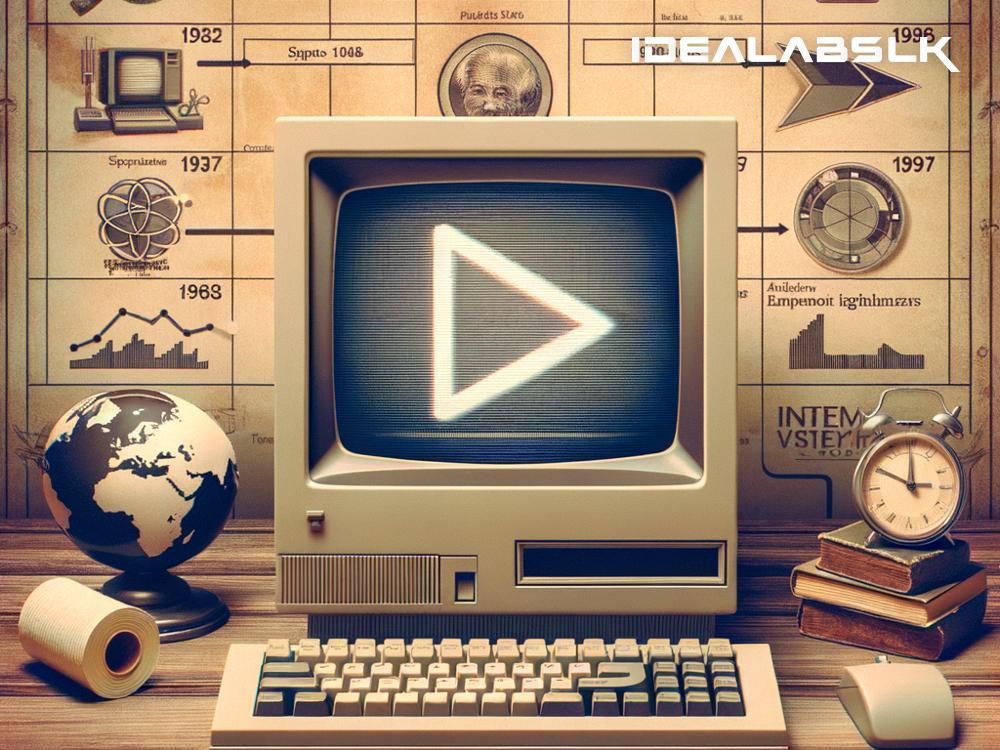Unlocking the Past: The Origins of Video Streaming
In today’s digital age, video streaming seems like second nature to us. From catching the latest series on Netflix, enjoying a live broadcast on YouTube, or participating in a work meeting via Zoom, streaming is an integral part of our lives. But have you ever stopped to wonder how this technology that we take for granted came about? Let’s dive into the fascinating journey of video streaming’s origins.
The Idea Sparks
Believe it or not, the idea of video streaming predates the internet as we know it. The concept of watching video content without having to download it first was a dream that technologists had long before it became a reality. The journey began in the 1990s, a pivotal decade for the digital world.
Early Days and the Internet Boom
The very foundation of video streaming is deeply intertwined with the expansion of the Internet. In the early 90s, the Internet was a burgeoning network, primarily used by academics and the military. It wasn’t until 1993 when the World Wide Web went public that the possibilities for video streaming began to take shape. This was the era of slow dial-up connections, where even loading a simple image could feel like an eternity.
A Milestone Moment: The First Stream
One of the watershed moments in the history of video streaming happened in 1993. A band named Severe Tire Damage made history by becoming the first group ever to live stream a performance online. This was a crude, rudimentary form of streaming by today's standards, but it was groundbreaking. The event utilized technology developed by the Xerox PARC team, showcasing that real-time video transmission over the Internet was possible.
The Rise of RealPlayer
In 1995, a pivotal development took place with the release of RealPlayer, by RealNetworks. RealPlayer was the first popular media player that could stream audio (and eventually video) over the internet. Despite the low video quality and the need for frequent buffering, RealPlayer demonstrated the potential of streaming media, making it accessible to a broader audience for the first time.
Pushing Boundaries: Progressive Download
As the internet began to speed up, with more people switching from dial-up to broadband connections, the way was paved for significant advancements in streaming technology. One such development was the introduction of progressive downloads. This allowed users to start watching video content before the entire file had been downloaded, significantly improving the user experience. Although not streaming in the purest sense, this technology was crucial in making online video more user-friendly and popular.
Entering the Modern Era: The YouTube Revolution
The launch of YouTube in 2005 marked the beginning of a new era in video streaming. For the first time, users had a platform where they could easily upload, share, and view videos without needing to download files or own sophisticated software. YouTube's simplicity and accessibility played a significant role in making video streaming part of everyday life, laying the groundwork for the streaming services we enjoy today.
The Growth of Streaming Services
After YouTube’s success, the late 2000s and 2010s saw an explosion of streaming services. Companies like Netflix transitioned from DVD rental services to streaming platforms, offering vast libraries of movies and TV shows on demand. Innovations in streaming technology, coupled with faster internet speeds and the proliferation of smartphones, have made video streaming an indispensable part of modern entertainment and communication.
Where We Stand Today
From its humble beginnings in the early 90s, video streaming has evolved into a seamless, high-definition experience that connects us to content from around the world instantly. The journey from real-time broadcasts of rudimentary video clips to the high-quality, on-demand streaming we enjoy today is a testament to human ingenuity and the relentless pursuit of technological advancement.
Embracing the Future
As we look to the future, video streaming will continue to evolve, with advances in virtual reality, 5K, and beyond, promising to further enhance our viewing experience. The story of video streaming is far from over, and if history is any indication, the best is yet to come.
In simple terms, video streaming has transformed from a mere concept to a cornerstone of digital communication and entertainment, all within a few decades. This evolution, born out of innovation and the need to connect and entertain, showcases the incredible pace of technological progress and sets the stage for an exciting future.

